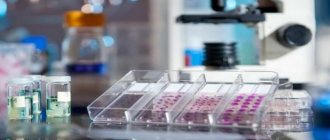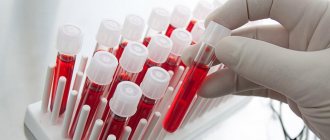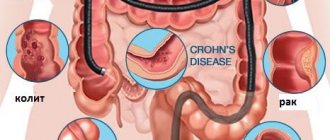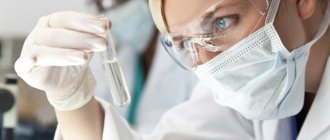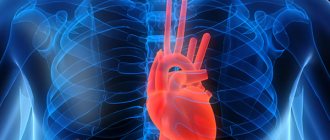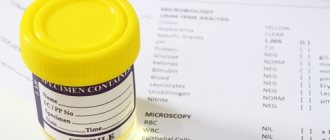— Advertising —
Blood connects all body systems. Changes in the functioning of any organ are reflected in its composition and biochemical parameters even before the onset of symptoms of the disease. Therefore, knowing the main types of blood tests and performing a preventive analysis , you can assess your health status with a sufficient degree of accuracy and identify problem areas in the body.
Why do some tests require venous blood, while others require capillary blood?
In practice, 2 main methods of collecting biomaterial are used more often than others - from a finger and a vein. Capillary blood is needed if a general analysis is necessary. For other studies, venous samples are taken. This is due to the fact that blood obtained in different ways differs in chemical composition. Venous is considered to be of higher quality; its study allows us to identify pathologies that cannot be determined by studying capillary.
This analysis is prescribed for certain purposes, while blood from a finger is given by all patients who complain to the doctor for the first time, as well as by persons undergoing medical examinations. In addition, blood is taken from a vein if a person needs to donate it for several tests at once. This is explained by the fact that it is impossible to take a large volume of biomaterial from a finger.
Laboratory and instrumental research
Laboratory and instrumental research is usually called a set of methods and tools used to carry out analyzes necessary for diagnosing diseases. The choice of the specific tool and method used for analysis is made in accordance with the purpose of the study.
Depending on this, they distinguish:
- Immunological research . They are carried out to assess the state of the patient's immune system.
- Genetic predisposition research . It is necessary to identify a person’s predisposition to the appearance or development of certain diseases, as well as to determine the Rh factor, blood clotting level, etc.
- Hormonal studies . They are carried out to determine the correctness and efficiency of the endocrine system and identify diseases that arise as a result of hormonal imbalance.
- Diagnosis of infectious diseases . Modern laboratory and instrumental research methods are distinguished by high accuracy, which allows timely detection of any type of infection.
General analysis
This study is prescribed not only for preventive purposes. With its help, the attending physician can monitor the dynamics of changes in the existing disease. A general blood test is a type of examination of liquid connective tissue, which is the most common. Biomaterial is usually collected from a finger, but can also be taken from a vein. Thanks to this type of blood test, the doctor receives information about the patient’s general health status. In addition, he has the ability to predict the occurrence of certain diseases.
Blood consists of plasma and formed elements. Its chemical composition is almost always the same. But when any pathology occurs, the indicators begin to change. In this case, other types of blood tests are additionally prescribed - from a finger or from a vein.
During the study, the following values are determined:
- Hemoglobin. It plays an important role in transporting oxygen from the lungs to every cell of the body.
- Red blood cells. These formed elements contain hemoglobin. A decrease in their number indicates anemia.
- Color indicator - a parameter that provides information about the relative content of hemoglobin in 1 red blood cell.
- Reticulocytes. These are immature red blood cells with remnants of RNA. They show the rate of formation of red blood cells.
- Platelets. They play an important role in the blood clotting process. Deviation of the indicator from the norm indicates its violation.
- Erythrocyte sedimentation rate. An increase in this parameter is a sign of the presence of some pathology.
- Leukocytes. Their task is to fight viruses and bacteria. An increase in their number indicates an inflammatory process.
- Neutrophils, which destroy pathogenic microorganisms as they enter the body.
- Eosinophils. Their increase may indicate the presence of an allergic or parasitic disease.
- Basophils. They prevent the spread of allergens.
- Lymphocytes are cells responsible for acquired immunity.
- Monocytes. They are a powerful defense for the body against pathogens.
Before this type of blood test, it is recommended:
- Avoid any meals 8 hours before donating the biomaterial. Drinks are also prohibited. The exception is still water.
- Refrain from physical and psycho-emotional stress.
How to find out what the norms are in a blood test
Of course, only a doctor can correctly decipher the results of the study and make a diagnosis, but for general development it would not hurt everyone to know what the norms are in a blood test.
You can find out the reference values of the research results on the Internet: there are many specialized medical websites that provide information about what blood tests are available, why they are performed, what values are normal, and what diseases deviations from the average may indicate. You can also see the standards on the research referral form.
It should be noted that reference values depend on the gender and age of the patient. And since there are no forms for children’s blood tests, only a pediatrician can correctly interpret the test values for young patients.
Biochemical research
Not only the previous type of blood test can provide information about the patient’s overall health. What other methods exist for studying biomaterial?
Most often, doctors prescribe a study, the results of which allow us to assess the degree of functioning of all organs and systems. It is called a biochemical blood test - a type of laboratory diagnostics, which also reflects the level of saturation of the body with vital microelements and allows you to find out the speed of metabolic processes.
It is recommended to conduct the study annually to monitor health status. Also, with its help, the doctor has the opportunity to observe changes in existing diseases and, if necessary, adjust the previously prescribed treatment regimen.
For this type of analysis, blood is taken from a vein in a volume not exceeding 5 ml, which is then distributed into several test tubes.
The study requires thorough preparation:
- It is forbidden to eat food 12 hours before collecting biomaterial;
- 24 hours before, you need to exclude coffee and strong tea from your diet;
- for 3 days it is undesirable to eat fatty, fried, spicy, salty foods, drink alcohol-containing drinks;
- within 24 hours you need to reduce the intensity of physical activity;
- It is necessary to donate blood in the morning, before taking medications and performing other medical procedures;
- 24 hours in advance, it is prohibited to take medications that may affect the result (the list is agreed upon with the attending physician);
- Immediately before the test, it is important to avoid stressful situations.
Fulfillment of these conditions is mandatory, since any action performed by a person is reflected in the results of biochemical analysis.
The most important types of blood tests depending on gender
Different hormonal profiles, as well as metabolic rates and characteristics, explain the different susceptibility of men and women to the same diseases. Thus, men, due to high concentrations of testosterone, which increases cholesterol levels in the blood, are more prone to cardiovascular diseases. While the incidence of hypercholesterolemia in women is low, thanks to estrogens. Therefore, the point of application of preventive screening will depend on gender.
Important preventive tests for women
- Complete blood count and hemoglobin level. A preventive test can detect hidden anemia. This is especially important for women planning pregnancy, as well as after 45 years during hormonal changes.
- Assessment of thyroid function. Determination of the concentration of thyroid-stimulating hormone and thyroxine should be carried out regularly for women after 40 years of age.
- C-reactive protein. The test allows you to identify hidden inflammatory processes in the body. It is recommended to take it not as an isolated indicator, but in conjunction with a general blood test.
- Determination of blood glucose levels. The test allows you to detect latent type 2 diabetes mellitus. The analysis is performed once a year.
Also read on this topic: Clinical minimum for women - what you need to know
Basic preventive tests for men
- Monitoring PSA levels. The purpose of preventive screening is to identify tumor processes in the prostate gland. After 40 years, the test is carried out at least once a year.
- Assessment of the risk of developing atherosclerosis and coronary disease. To get the most complete picture, it is recommended to undergo a set of tests: determine lipid metabolism indicators, the concentration of C-protein and homocysteine. The survey is carried out annually.
- Determination of blood glucose concentration.
Regular monitoring of your health using preventive blood tests, even in the absence of complaints, should become a habit. After all, most diseases are much easier to treat if they are identified at an early stage.
Anastasia Khomyakova, biochemist Illustrations: Anastasia Leman
Test for sugar
The level of glucose concentration largely determines a person’s overall well-being. Its decrease negatively affects the functioning of the nervous system: irritability and a constant feeling of fatigue appear.
A blood sugar test is a type of study, the results of which can be:
- hypoglycemia – low glucose level;
- Hyperglycemia is an indicator higher than normal and is one of the symptoms of diabetes mellitus.
For this type of blood test, biomaterial can be collected either from a finger or from a vein, but the results differ with different methods. For example, in adults, a level not exceeding 5.5 mmol/l is considered normal. When taking blood from a vein – 6.2 mmol/l.
The analysis is prescribed to people at risk for diabetes, as well as people who have already been diagnosed with it. In addition, the study is carried out upon admission to the hospital, including before surgery.
Preparation for analysis involves following the following recommendations:
- do not eat 8 hours before blood sampling, it is not advisable to even drink water;
- the day before the test, exclude foods rich in carbohydrates from the diet;
- During the same time, you need to reduce physical and emotional stress.
Tests for tumor markers
These studies allow doctors to identify proteins that are produced by cells of various tumors. Neoplasm proteins are very different in their functions from natural substances in the body or are produced in quantities significantly higher than normal. Embryonic cells produce tumor markers and this is considered normal. But the content of tumor markers in the blood of an adult is a signal of cancer.
- Shift of the leukocyte formula to the left
- Creatinine in the blood, what is it?
- ESR in the blood, normal
- Blood test during pregnancy: normal
Analysis to determine blood group and Rh factor
This study is considered one of the most important. It is carried out in the following cases:
- preparation for surgery;
- pregnancy (to exclude or identify Rh conflict);
- the need for transfusion of blood or its components;
- the presence of hemolytic disease in newborns.
Some people make a note in their passport about what their blood type and Rh factor are. If an accident occurs, this information can save lives.
For this type of analysis, blood is taken from a vein. The study does not require special preparation; you need to follow standard recommendations:
- Avoid eating 4 hours before donating biomaterial;
- 12 hours before, reduce the intensity of physical activity and avoid getting into stressful situations;
- During the same time, it is undesirable to smoke and drink alcoholic beverages.
Other urine testing methods
Additionally, other urine samples may be prescribed to clarify the diagnosis.
Amburger method
Biomaterial for such a study should be taken on the condition that the patient drank little liquid during the day and did not drink at all at night. After the first urination, the patient collects urine every three hours.
The test is taken to determine the presence of various formed elements in urine.
Method according to Kakovsky-Addis
The Kakovsky-Addis method has not been very widespread in recent years. It is used to study the presence and quantity of formed elements in the patient’s urine.
Before collecting urine, the patient eats a protein diet and limits fluid intake.
The first morning urination is missed. Then urine is collected during the day. At the same time, 4-5 drops of Formalin are added to it. The material must be stored in a refrigerator.
This method of analysis is considered very labor-intensive and is rarely used.
Sulkowicz test
This test determines the calcium content in the urine. It is known that this microelement is vital for the body. Insufficient levels of it may indicate a health problem.
The morning urine sample is used for the study. It is mixed with a special substance. As a result, a chemical reaction occurs. One of its results is cloudiness of the liquid. Based on its characteristics, the following conclusion is drawn:
- There is no clouding . This indicates a lack of vitamin D and dysfunction of the parathyroid glands.
- A slight degree indicates that the patient has a normal reaction of a healthy person.
- Too much cloudiness indicates too much vitamin D and too much activity of the parathyroid glands.
Rerberg test
In this case, a parallel study of the composition of the patient’s urine and venous blood occurs. This is necessary to determine the level of creatinine concentration. This type of analysis is usually used in cases where we are talking about:
- glomerulosclerosis;
- jades;
- renal failure;
- “shrinked kidney” syndrome.
The doctor thus studies the reabsorption and excretory functions of the kidneys. The first of them characterizes the reabsorption of certain substances into the blood or lymph.
Blood clotting test
Another name for the study is coagulogram. The property of liquid connective tissue to form blood clots prevents its loss when tissue integrity is violated and does not allow pathogens to enter the wound.
Various pathologies can disrupt the blood clotting process. Deviations in any direction pose a serious threat to health. On the one hand, the risk of blood clots increases, on the other - large blood loss. During the study, the rate of formation of clots and plasma coagulation is determined, diseases that caused disruption of the process are identified, etc.
Preparation for analysis is standard:
- do not eat for 12 hours, only drink still water;
- It is forbidden to drink alcohol-containing drinks 48 hours before.
Types of stool tests
Such studies are very informative and allow us to identify:
- disturbances in the functioning of the digestive system;
- helminthic infestation, bacterial infection;
- hidden blood
The following types of tests are common:
- coprogram. Analyzes the chemical and physical characteristics of feces, which allows you to evaluate the functioning of the stomach, liver, pancreas, intestines, and identify inflammation and colitis. The detailed analysis contains more than 20 indicators obtained as a result of chemical, macro- and microscopic examination;
- occult blood test. Prescribed for suspected bleeding in any part of the digestive tract. The coprogram does not show it, and such a study is needed for an accurate diagnosis;
- analysis for dysbacteriosis. Evaluates intestinal flora, identifies 15 main types of pathogenic bacteria, fungi, and microorganisms. Prescribed for disorders in the gastrointestinal tract, after long-term treatment, which can provoke them.
Immunological study
Using this method, the doctor has the opportunity to assess the functioning of the body's defense system, as well as determine the amount of antibodies in the blood.
Indications for its use are:
- frequent occurrence of infectious diseases;
- suspected immunodeficiency state;
- allergic reactions;
- complications after surgery;
- autoimmune pathologies.
The biomaterial is collected from a vein. What types of blood tests are there? Detailed research is carried out in rare cases. Most often, tests are prescribed for lymphocytes and immunoglobulins. The former are responsible for recognizing and fighting antigens, the latter are responsible for neutralizing infection.
Before taking the test, it is prohibited:
- eat food within 12 hours (you are allowed to drink water);
- drink alcohol (12 hours before) and smoke (1 hour before).
Immediately before surrendering, it is important to be in a state of calm.
Bilirubin
If bilirubin is elevated in the blood, it means that its metabolism in the body is disrupted. And this, in turn, means that liver function is impaired. An increase in bilirubin is manifested by jaundice. Prolonged jaundice provokes the development of liver failure. To determine the type of jaundice, it is necessary to study the levels of direct and indirect bilirubin
The norm is direct bilirubin 0-5 µmol/l.
Plus, it’s worth taking a general blood test to assess hemoglobin levels, average volume of red blood cells, white blood cells, platelets and ESR.
Hormonal profile
This analysis allows you to identify diseases before the first symptoms appear. This is explained by the fact that hormones are involved in all metabolic processes in the body.
What types of blood tests are there? Hormonal tests are being carried out:
- Thyroid gland.
- Pituitary gland.
- Adrenal glands.
- Sexual
As a rule, they are prescribed for:
- infertility;
- prostatitis;
- alopecia;
- osteoporosis;
- disruptions of the menstrual cycle in women;
- obesity;
- miscarriage.
Venous blood is taken for analysis. Before taking it, it is not recommended to eat food (8 hours before) and undergo physical activity. The main rule is to avoid taking hormonal medications for 7 days.
Clinical laboratory tests
The concept of clinical laboratory research refers to testing and experiments that are carried out with the participation of people. They are carried out to evaluate the effectiveness of new pharmaceuticals and treatment methods. Their key purpose is to identify possible side effects.
In fact, this laboratory research method is a key stage of preparation before the release of a medical product for sale.
Blood test for helminths
The vast majority of the world's inhabitants have parasitic diseases. Most people don't even know about it. This type of blood test (for parasites) is the most accurate diagnostic method. With its help, it is possible to prevent the development of diseases, the consequences of which can be both disorders of the digestive system and severe damage, including death.
Preparation for analysis implies compliance with the following rules:
- do not eat 12 hours before blood sampling;
- Do not drink alcoholic beverages 24 hours before;
- avoid getting into stressful situations;
- reduce the intensity of physical activity;
- One week before the study, you need to stop taking medications.
The biomaterial is collected from a vein.
Types of urine tests
Such tests are used to diagnose the condition of the genitourinary system. Most often, a clinical urine test is sufficient, which evaluates color, transparency, odor, acidity, the presence of protein, and sediment. In narcology, a test for the use of psychotropic or narcotic drugs, alcohol in the last 2-5 days can be carried out. If a bacterial infection is suspected, a culture is performed. In the diagnosis of diabetes mellitus and certain kidney diseases, the entire volume of urine is examined over a 24-hour period.
BLOOD ANALYSIS:
types of research,
indications, preparation
A blood test is one of the most common types of clinical tests. This is due, first of all, to the fact that any disease of the body in one way or another affects the composition of the blood. This biochemical fluid passes through the entire organ system and can provide detailed information about the health of the body's systems. In this regard, a blood test is the most indicative and objective way of diagnosing human health.
GENERAL BLOOD EXAMINATION
A general blood test is one of the first tests prescribed to a patient. It is carried out not only for targeted detection of a specific disease, but also for prevention. A timely examination allows the doctor to identify the presence, as well as the likelihood of the manifestation of certain diseases, and prevent them at an early stage of development. The number of tests, as well as their set, is determined individually by the attending physician. A series of studies allows us to track the disease over time, as well as evaluate the effectiveness of treatment and the extent to which the blood performs such functions as:
· providing immunity,
Saturation of cells with oxygen and nutrients
coagulability,
· maintaining homeostasis, etc.
In addition to general functions, examination of a biochemical fluid allows one to determine the patient’s health status based on the presence and quantity of components.
What indicators are used for blood testing?
A general blood test is carried out according to the number of its components, such as:
leukocytes - white blood cells that provide protection to the body from viruses and infections,
· erythrocytes - red blood cells that provide oxygen delivery to organ cells,
hemoglobin is an iron-containing pigment responsible for gas exchange,
· platelets are cells that provide blood clotting.
Each of these elements has a certain level of content in the blood. Deviations in the direction of decrease or increase indicate disturbances in the functioning of any systems or a developing disease. In addition, abnormalities in the state of the body are indicated by deviations in the normal blood test for hematocrit, ESR (erythrocyte sedimentation rate), color index, leukocyte index and leukocyte formula.
Blood test: norm and deviations
A blood test, the norm of which is different for women and men in different age categories, is carried out according to the ratio of blood cells. For example, an increased level of lymphocytes and leukocytes in the blood indicates an inflammatory process in the body. In relation to the quantitative indicators of other components, the cause of inflammation may be a virus or a systemic disease. A reduced content of leukocytes is provoked by a decrease in immunity, indicating exhaustion and disruption of hematopoietic processes.
An increased number of eosinophils (granular white blood cells) indicates the presence of allergic reactions or parasites.
A decrease in platelet count may be an indicator of bleeding disorders due to abnormal structure or damage to the blood cells.
A high level of red blood cells indicates the development of a serious blood disease - erythremia. A decrease in the iron-containing protein hemoglobin in red blood cells indicates anemia.
An increase in ESR levels may be a consequence of surgery or medication. The decrease is a consequence of exposure to corticosteroids or prolonged fasting.
Information about the quantity and characteristics of formed blood components is collected into a single hemogram. Using it, the doctor will be able to determine the risk of development and the presence of various diseases.
BIOCHEMICAL BLOOD STUDY
Biochemical blood testing is one of the most popular and in demand diagnostic methods. It allows you to obtain information about the state of internal organs and evaluate their work, detect micronutrient deficiencies, analyze metabolism, etc. With its help, a doctor can diagnose anemia, diabetes, and malignant tumors of internal organs at an early stage. In addition, with the help of a biochemical blood test, it is possible to identify not only the presence of disturbances in the functioning of the body, but also to determine their causes and the severity of the pathologies. Therefore, this research method is one of the first to be prescribed when any disease is suspected.
Biochemical blood test in children and adults
A biochemical blood test in children is performed to accurately diagnose diseases. The most common indications for testing are:
increased excitability, poor sleep, late teething (rickets may be a likely cause),
· pain in the right side, feeling of heaviness after eating (dysfunction of the gastrointestinal tract and liver),
· weight loss or obesity, thirst (signs of diabetes and metabolic disorders), etc.
All these diseases in children are determined with high accuracy using a biochemical blood test.
For both adults and children, this type of test is prescribed for almost any illness or suspected dysfunction. Often the study is not carried out for an accurate diagnosis, but to exclude other possible options and narrow the range of possible diseases. This state of affairs is typical for violations that are difficult to identify and occur in a latent form. In this case, after a biochemical blood test, other studies are prescribed.
BLOOD ANALYSIS FROM A VEIN AND FROM A FINGER FOR VARIOUS DISEASES
A venous blood test provides a wealth of information about hormone levels and other indicators of a person's health. Venous blood contains slightly more glucose, which may also be important for a clear diagnosis.
A finger prick blood test allows you to obtain capillary blood, which is also widely used for research. This method is used when a small amount of blood is sufficient for diagnosis.
Different types of blood tests - from a vein or from a finger - are used for objective diagnosis of various types of pathologies of the liver and kidneys, cancer, dysfunctions of the gastrointestinal tract, chronic and acute infectious, viral diseases, etc. To study the severity of these diseases, an analysis of total protein in the blood serum is prescribed. It refers to the concentration of two fractions: globulins and albumins. Total protein performs a number of important functions in the body:
· participates in the process of blood clotting,
regulates the level of acid-base balance,
· carries out the transfer of gases, nutrients and medicinal components to the cells of internal organs,
· controls the level of hormones and other active substances,
· participates in the body’s immune defense processes, etc.
A decrease in the concentration level or a quantitative increase in protein loss can be caused by pathological diseases of the gastrointestinal tract, kidneys, liver, long-term fasting, and diabetes mellitus. All this leads to muscle exhaustion of the body and decreased immunity.
No less important for complex diagnostics is the analysis of the content of reticulocytes in the blood - the previous forms of red blood cells. Their number is a determining indicator of how the bone marrow performs its functions. An increase or decrease in the level of reticulocytes indicates hematological diseases associated with disruption of red blood cells, autoimmune and other diseases.
Testing blood from a finger or vein for cancer markers occupies a special place in the field of pathology diagnostics. During the study, proteins produced by active cells of various tumors are detected. Such an examination makes it possible to assess the nature of the tumor - malignant or benign. With its help, the doctor determines the main directions in the treatment program, and also monitors the disease over time and monitors the effectiveness of treatment.
PCR testing makes it possible to detect the presence of infectious diseases, including sexually transmitted diseases, with a high degree of accuracy. Today, this technique is one of the most effective for detecting viruses at an early stage.
Blood tests also allow you to determine the presence of allergens, hidden diseases and much more. Biomaterial is collected, as a rule, from a vein or from a finger. The procedure requires simple preparation.
PREPARATION FOR BLOOD TESTS
Preparation for biochemical research
The composition of human blood is not constant and can change under the influence of many factors. In particular, after a respiratory infection or heavy physical activity, the number of leukocytes increases. Drinking alcohol also changes the ratio of blood cells. As a result, biochemical analysis data may be distorted. To obtain the most objective information, you need to undergo simple preparation before taking the tests. It is better to check with your doctor for detailed information about the necessary measures. There may be individual recommendations for some patients. For example, a general list of requirements includes stopping medications (especially antibiotics) 2 weeks before the procedure. However, the course of treatment cannot be interrupted to determine the concentration of the drug in the blood.
You can also get recommendations from the laboratory chosen for testing. Qualified employees of the Polar Medicine Center will provide you with complete information support. Following simple rules will allow the doctor to create a more objective picture of the patient’s health condition and make a clear diagnosis.
General recommendations before donating blood:
Before taking a blood test, you should consult with your doctor. In addition, in order to obtain the most objective assessment of health status, a number of requirements should be met:
· complete the course of taking medications within 14 days (exception: cases when the concentration of drugs in the blood is examined);
· give up fatty, fried foods and alcohol in 1-2 days;
· 1 hour before - refrain from smoking;
· Eliminate physical activity and psychological stress in 30 minutes.
It is not recommended to take tests after X-rays, physiotherapeutic procedures and instrumental examinations.
Don't worry! All procedures are performed by specialists using modern disposable sterile instruments. Taking a blood test does not hurt and is completely safe!
A biochemical blood test (biochemical blood test) is taken strictly on an empty stomach - after sleep and an 8-hour (preferably 12-hour) overnight fast. You can only drink water.
A general blood test is taken no earlier than 1 hour (preferably 3 hours) after the last limited meal. You can drink water before the procedure.
The question that remains to be resolved is where is the best place to take blood tests.
WHERE TO GET A BLOOD TEST?
A blood test must be taken in a professional laboratory. This ensures the objectivity of the research results and also provides many other benefits. The laboratory of the Polar Medicine Center offers its services for conducting various tests, including blood tests.
The main principles of our work are the accuracy of results in the shortest possible time . A complete blood count, leukocyte count and ESR are examined within 1 day, reticulocytes - within 2 days. Multi-level quality control guarantees high reliability of research results.
The material is collected by laboratory staff. Sterile disposable instruments are used to carry out the procedure. Thanks to the use of modern European laboratory equipment, donating blood has become absolutely painless and safe, and the blood testing process has become simpler.
Additional research is possible without re-taking the material.
Today we offer a full range of laboratory tests carried out in a short time and with a high degree of reliability. Our range of services includes allergy, oncology, hormonal, immunological and other types of research.
The success of treatment often depends on how quickly and accurately the diagnosis is made. Therefore, the quality of the analyzes performed becomes a particularly important factor.
The laboratory of the Polar Medicine Center means high efficiency and accuracy of any research. By contacting us, you will be 100% confident in the reliability of the results of any analyzes.
Structural and operational analysis
Structural analytics involves studying the operations carried out by an enterprise, on the basis of which it is possible to calculate the share of each of the counterparties. Equal attention is paid to both passive and active operations. Structural analysis is most relevant for financial corporations, as it allows one to summarize statistics for all economic counterparties. As part of the event, the structure of the organization’s revenue component and profits is assessed. At the same time, analysts are examining the expense component of the enterprise's activities.
Operational analysis, which involves a simultaneous study of value, is a research activity that allows one to formulate forecasts for the profitability of an enterprise. During the work, the profitability, prospects, and unprofitability of the company are assessed, and a cost characteristic is given for each operation. Based on detailed statistics, you can understand what the company’s profit consists of and what policies need to be promoted in order to achieve prosperity. Analysts take into account that profit maximization is ensured not only through deposits, but also through loans, and they equally analyze both sides of the financial issue.
Study of the coagulation system (hemostasis)
Analyzes of this group are important in surgery, gynecology, traumatology, combustiology (medical specialty dealing with the treatment of burns), angiology (diseases of the vascular system).
Diagnostics of coagulation consists of determining:
- blood clotting time, duration and volume of capillary bleeding;
- capillary fragility tests;
- platelets, quantity, size, aggregation-adhesive capabilities, platelet factors;
- plasma recalcification time;
- deficiency of clotting factors;
- main physiological anticoagulants.
The state of fibrinolysis (the ability of blood to dissolve clots) is also assessed. These indicators are very important in the practice of cardiology (for myocardial infarction) and in neurology (for cerebral strokes).
Risk analysis
This term is used to refer to the anatomical activity of identifying risk factors with a concomitant assessment of the significance of each of them. Before starting work, a system, event or complex of such is determined, in relation to which the identified risk aspects are assessed. In fact, analysts identify the likelihood of a negative event occurring that could prevent the successful achievement of the plan.
Currently, risk analysis is more often carried out in the field of information technology than in any other application area. This measure has a number of specific features. Evaluation work is carried out on the basis of a predetermined metric and using strictly specified methods. An integrated approach involves assessment measures, on the basis of which certain components are ignored, others are reduced, and for others, measures are taken to eliminate the consequences.
Features of blood parameters in pregnant women
During a woman's pregnancy, the unborn baby has a profound effect on her body. In addition to external changes - a growing belly, a changing gait and much more - blood counts also change. This is especially reflected in the levels of sugar and hormones in the blood.
The blood glucose level in a pregnant woman increases compared to normal levels in adults and amounts to 4.6-6.7 mmol/g.
During pregnancy, doctor's help is important
During pregnancy, it is highly advisable to undergo screening, which includes an ultrasound examination and a blood test for hormones. The key to a blood test is the content of progesterone and estradiol, a low or high value of which signals a risk to the fetus. The distribution of normal values depending on the stage of pregnancy can be seen in the table:
Hormone indicators for pregnant women
We hope our article will help you more easily navigate the test results.
And the most important thing is that only a professional doctor can make a diagnosis based on test results. No matter what detailed blood test you take, do not self-medicate - this can be fraught with life and health.
Let the blood tests be only preventative, don’t get sick!
Share with us which laboratories you choose for tests and whether you are waiting for a doctor’s consultation. If you have any questions, ask them in the comments.
Macroeconomic analysis
Collecting statistics and systematizing data of this kind involves assessing the enterprise as an element of the market on which it presents its product or service. At the same time, analysts examine the scale of passive and active operations, how much income the company receives, and how this compares with the income component of the country as a whole. In addition, it is important to assess how significant the level of participation of the enterprise is in the creation of the money supply and the distribution of services in the sector of specialization. At the regional level, statistics on credit resources and the degree of their influence on the market are usually analyzed.
As part of the analytical activity to collect statistics on passive and active operations, the scale of a strictly limited list of operations is compared. The indicators of the corresponding market sector as a whole are taken as reference.
Market analysis
There are two main methods to implement this event: fundamental, technical. The first involves an assessment of factors (politics, economics, society) influencing the current situation. In fact, the specialist evaluates the market and the economy within the boundaries of “bad/good”. The main idea of such analytics is the strengthening of the currency based on the stability of the economic situation. At the same time, they take into account that a strong currency stimulates trust in the state and leads to its successful, rapid development.
Technical analysis is a term applied to research work that monitors price adjustments. The most visual method of reflecting the received information is graphical. The researcher can see at any time how prices are changing, which helps predict developments in the near future. Usually, with sufficient preparation during the analysis, a specialist determines the dominant trends, identifies patterns, on the basis of which he identifies the optimal policy for concluding transactions in the chosen area.
Analytical activity: summing up
One of the key types of result analysis is the final one. This must be organized within the framework of any enterprise with a clearly defined cycle. It is recommended to systematically conduct the event monthly, annually, and also based on the results of quarters and half-years.
The main value of the final type of analysis of results is in a comprehensive assessment of the enterprise’s activities. Reporting data can be assessed from different angles, which allows you to correctly formulate the results of the period under study. In a commercial structure, the final analysis makes it possible to determine how economically efficient the enterprise is in the selected time period. Based on these data, you can assess your financial situation and determine what reserves there are to improve the situation, including the income component.
Health screening. What laboratory tests should be done every year?
GENERAL CONDITION OF THE BODY
General urine test, clinical blood test. The most common tests that each of us has taken at least once in our lives. Despite their familiarity, based on their results, you can draw conclusions about the changes that have affected your body, and, if necessary, prescribe a more targeted examination.
It is important to understand that the data obtained from these tests is general in nature, and the indicators characteristic of a particular disease can vary greatly from person to person.
A number of blood and urine parameters change with age, depending on dietary habits and medications. Therefore, you should not interpret the results yourself and draw hasty conclusions. Only a doctor can do this.
Price: clinical blood test - from 300 rubles, general urine test - from 200 rubles.
LIVER
Bilirubin, ALT and AST. The functioning of the detoxification system as a whole depends on how this organ functions. It is in the liver that substances that are toxic to our body are neutralized. Tests for liver enzymes (ALT and AST), as well as the bile pigment - bilirubin - can determine how effectively the liver copes with such a complex function.
Price: billirubin (full complex) - from 500 rubles, AST, ALT - from 270 rubles. every.
FAT METABOLISM
Lipid profile: total cholesterol, triglycerides, HDL, LDL. A test that helps assess the total concentration of cholesterol in the blood. And also the ratio of high-density lipoproteins - LDL ("good" cholesterol) and low-density lipoproteins LPN ("bad" cholesterol). Test results help assess the risks associated with atherosclerosis, coronary heart disease and stroke.
This test should be performed on all people who are overweight, have diabetes, or have a family history of cardiovascular disease.
Often they only look at total cholesterol levels. With a big stretch, such a test can be called informative. It is necessary to check the ratio of HDL and LDL. Paradoxically, both of these substances are important for our body. Thus, the main function of LDL is the delivery of cholesterol to the place of requirement. And HDL removes unclaimed cholesterol from cells, as well as from existing atherosclerotic plaques. All lipoproteins work together.
Price: from 650 rub.
THYROID
TSH, AT-TPO, AT-TG. The thyroid gland is the conductor of all metabolic processes in our body. The work of all other glands of the endocrine system depends on its health. Some women like to go on strict diets with a daily calorie content of 600-700 kcal, and this significantly undermines the functioning of the thyroid gland, reducing the production of its hormones. These tests must be done before planning a pregnancy. Tests are taken for TSH, a hypothalamic hormone that regulates the activity of the thyroid gland, as well as for the sensitivity of the gland itself to these hormones - AT-TPO, AT-TG.
Price: AT-TPO - from 1500 rubles, AT-TG - from 600 rubles, TTG - from 300 rubles.
If any test reveals abnormalities, then a repeat analysis must be done. This eliminates laboratory error. If deviations from the norm are confirmed, a specific treatment regimen is prescribed. After 2-3 months, the diagnosis is repeated to assess the effectiveness of therapy.
IMMUNITY, MOOD, BONES
Blood test for vitamin D3 (25-OH-choleciferol). 98% of residents of central Russia suffer from a deficiency of this vitamin. It regulates the functioning of the immune system, maintains normal levels of immunity and our mood. Responsible for emotional balance and control of eating behavior. With its deficiency, there is a tendency to overeat.
Price: from 1000 rub.
THE CARDIOVASCULAR SYSTEM
Blood test for homocysteine. This substance is an indicator of vascular health. The analysis helps determine the risks of cardiovascular disease. Moreover, its concentration shows how well the pregnancy will go: the level is higher than normal, the risks of preeclampsia, gestosis and possible pregnancy loss increase.
Price: from 1000 rub.
HEATING SYSTEM
Iron, ferritin. The presence or absence of iron deficiency anemia is an important indicator of health. Due to the regular loss of this valuable microelement during the menstrual cycle, women need much more of it. The need for iron also increases among those who engage in fitness. It is important not only to measure the concentration of iron in the blood, but also to take into account its reserves in tissues. Determining the level of ferritin makes it possible to detect a decrease in iron stores as early as possible. This condition is called latent iron deficiency.
Price: iron - from 130 rubles, ferritin - from 600 rubles.
SYSTEMIC INFLAMMATION
C-reactive protein is ultrasensitive. Shows the degree of systemic inflammation in the body (acute diseases and exacerbation of chronic diseases, trauma) and food allergies. The analysis will show how suitable the food you usually eat is for you. If the concentration is increased, advanced tests can be done to determine specific products that cause allergies.
Price: from 500 rub.
SEX HORMONES
On the 5th day of the cycle: estradiol, testosterone, prolactin, LH, FSH, DHEA. On the 21st day of the cycle: progesterone. Both how a woman feels and how she looks depends on their level. Sex hormones affect the condition of the skin, hair and nails, all metabolic processes, on which our weight also depends. Regular examination of sex hormones helps to catch diseases of the reproductive system and the initial manifestations of menopause in time. This test is required when planning pregnancy, selecting oral contraceptives, and hormone replacement therapy.
Price: full complex - from 2500 rubles.
CARBOHYDRATE METABOLISM
Glucose, insulin, glycated hemoglobin. Allows early detection of prediabetes and type 2 diabetes. WHO experts note that every 10 years the number of patients with this disease increases by 20%. Type 2 diabetes mellitus develops due to a decrease in the sensitivity of body tissues to insulin. It is usually provoked by lifestyle features: poor diet, lack of exercise and bad habits. Testing the level of fasting glucose, the level of the hormone insulin, as well as a test for glycated hemoglobin - the average number of glucose concentrations in the blood for a month - will help to detect the disease in a timely manner at the initial stage.
Price: glucose - from 125 rubles, insulin - from 450 rubles, glycated hemoglobin - from 600 rubles.
EXCRETORY SYSTEM
Urea. The level of its concentration in the blood is an indicator of kidney function. The first symptom of its excess is a tendency to swelling. Very often, an increase in its concentration is associated with nutrition - abuse of protein foods.
Price: from 250 rub.
Functional analysis
The functional type of analysis involves formulating the area of specialization of the enterprise. At the same time, experts pay attention to the company’s main area of activity and determine how significant the company’s place in the market is in this area. This type of analysis involves taking into account the way of interaction with other structures, the prospects for the development of these aspects. It is necessary to evaluate all counterparties and make a forecast for interaction with them. Based on the results of the work, it is possible to form fairly correct assumptions regarding the profitability of a legal entity in the relatively near future.
The functional type of analysis allows you to assess the liquidity of operations and develop approaches to improve this parameter. The main idea of the event is to identify unprofitable operations and exclude them from the scope of services provided by the company. In parallel with this, specialists assess the competitiveness of the enterprise and analyze how reliable its position in the market is.
What's new? Modern tests that will tell you even more about your health
MICROBIOTA ANALYSIS
Our health largely depends on the species and quantitative composition of intestinal microflora. Friendly bacteria help absorb microelements and vitamins and synthesize useful substances, such as serotonin. Opportunistic bacteria, if they are in excess, can affect intestinal permeability, exacerbating allergic reactions. The composition of the microbiota largely determines the functioning of the immune system, the speed of metabolic processes, the state of the gastrointestinal tract, the appearance of the skin, general well-being and even mood. A complete picture of the microbiome can be obtained by studying the inhabitants of the small and large intestines. In the first case, blood is donated, in which the metabolic products of microorganisms are determined and conclusions are drawn about the composition of the microbiota. In the second case, feces are examined.
